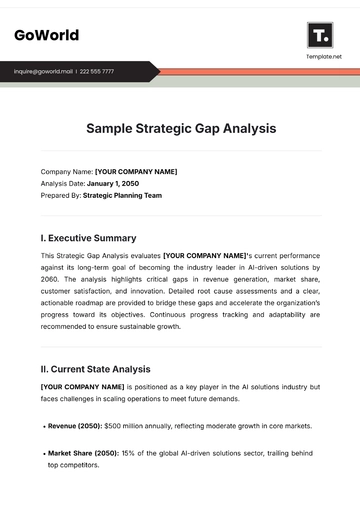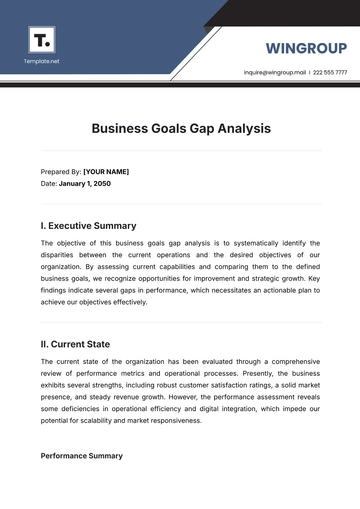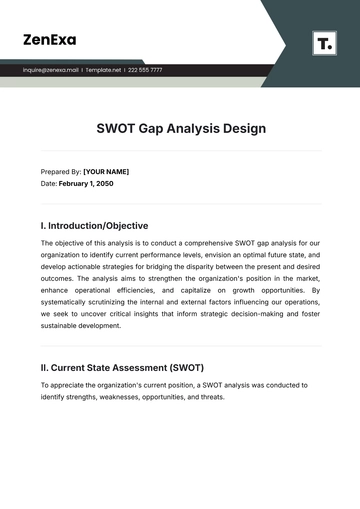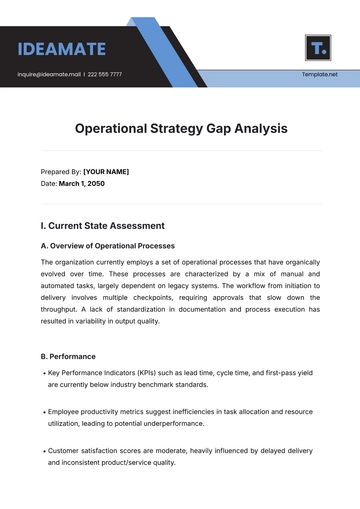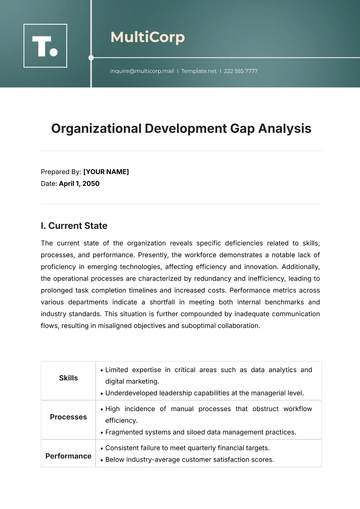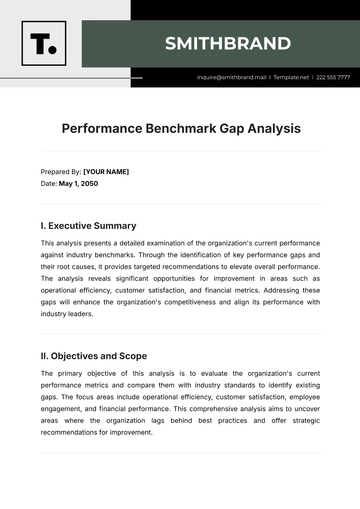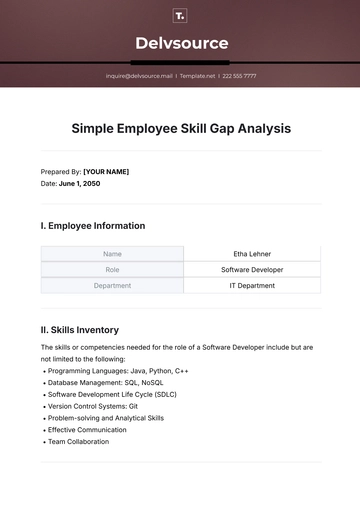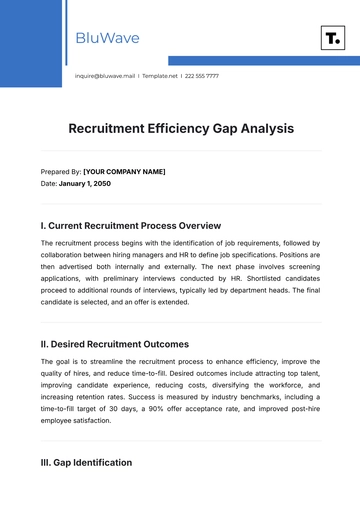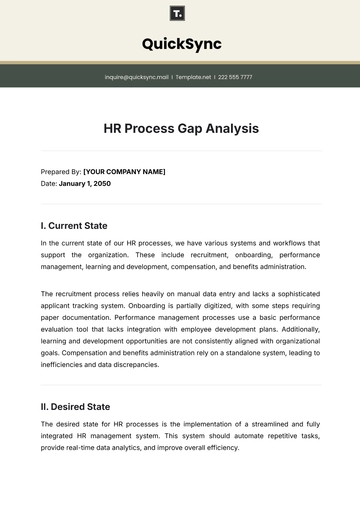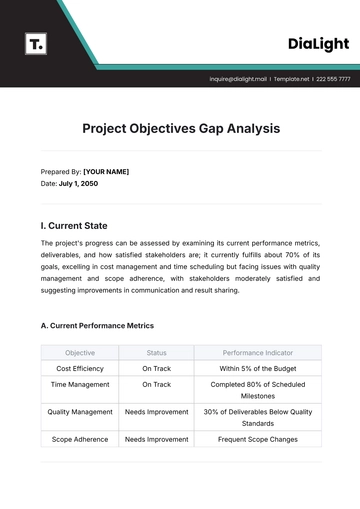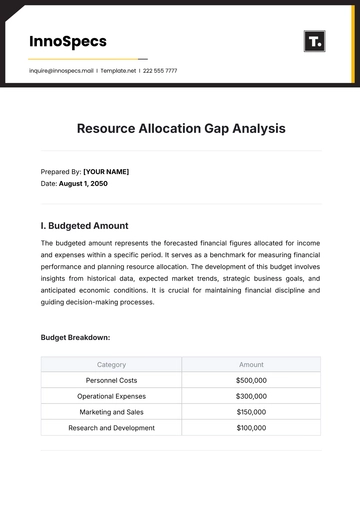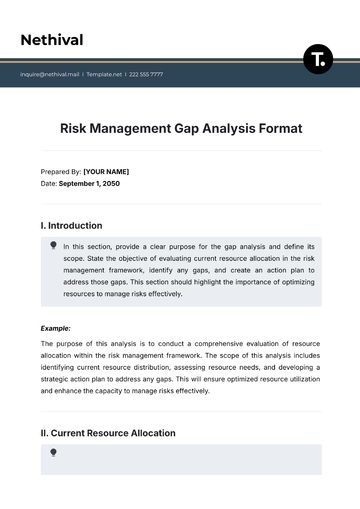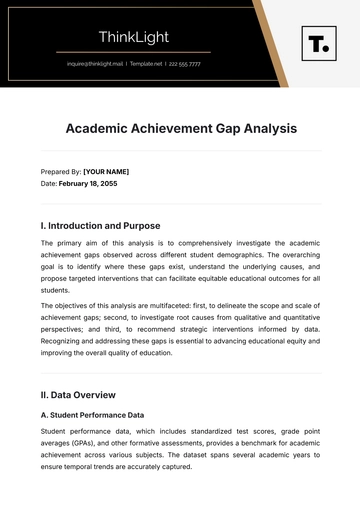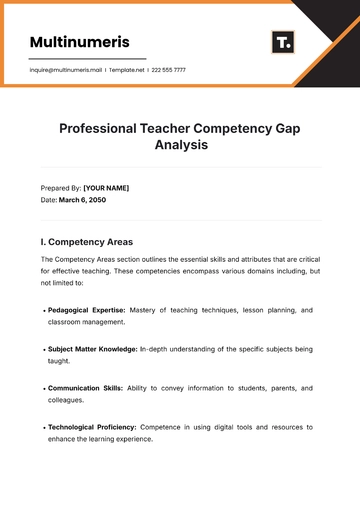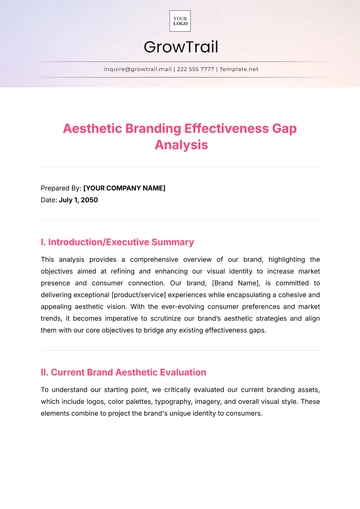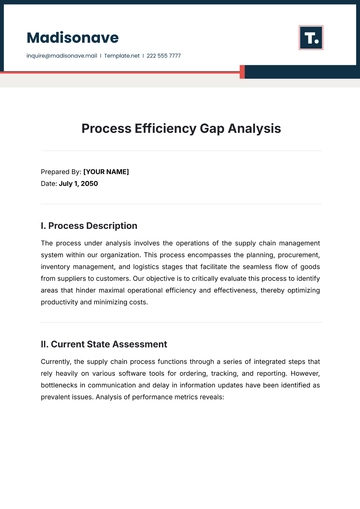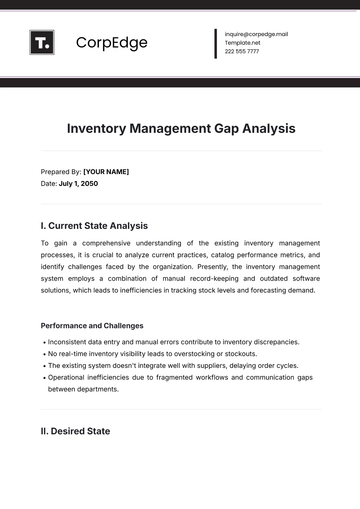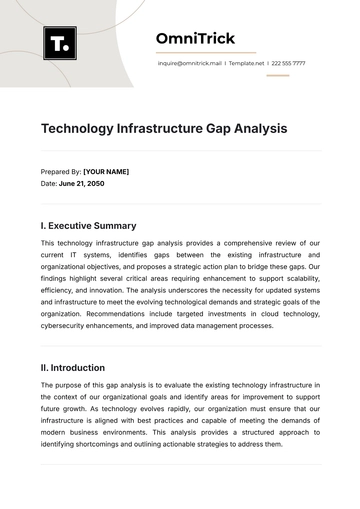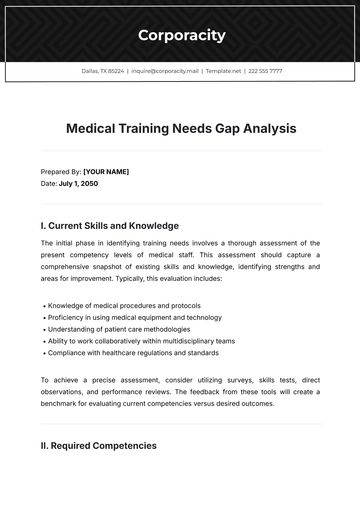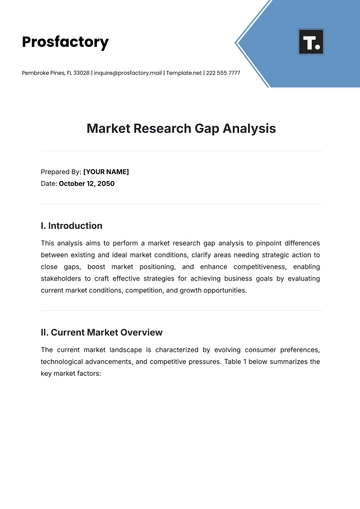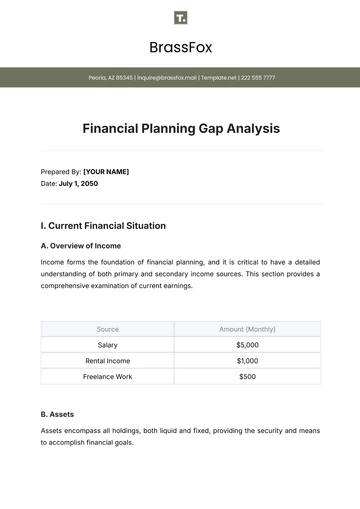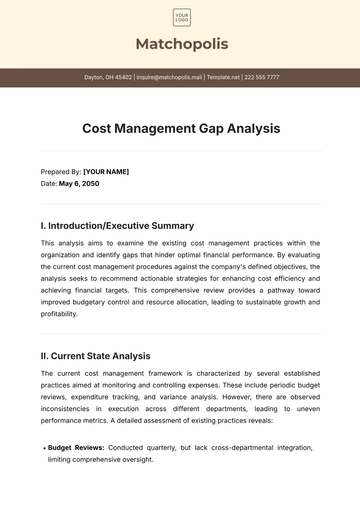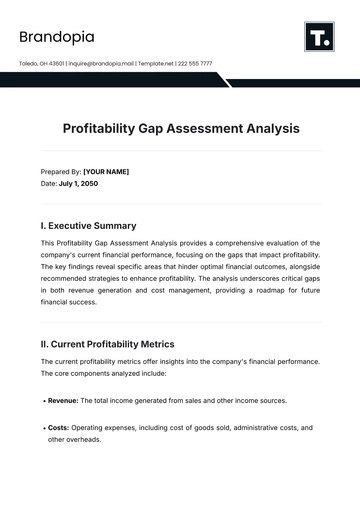Free Team Performance Analysis HR
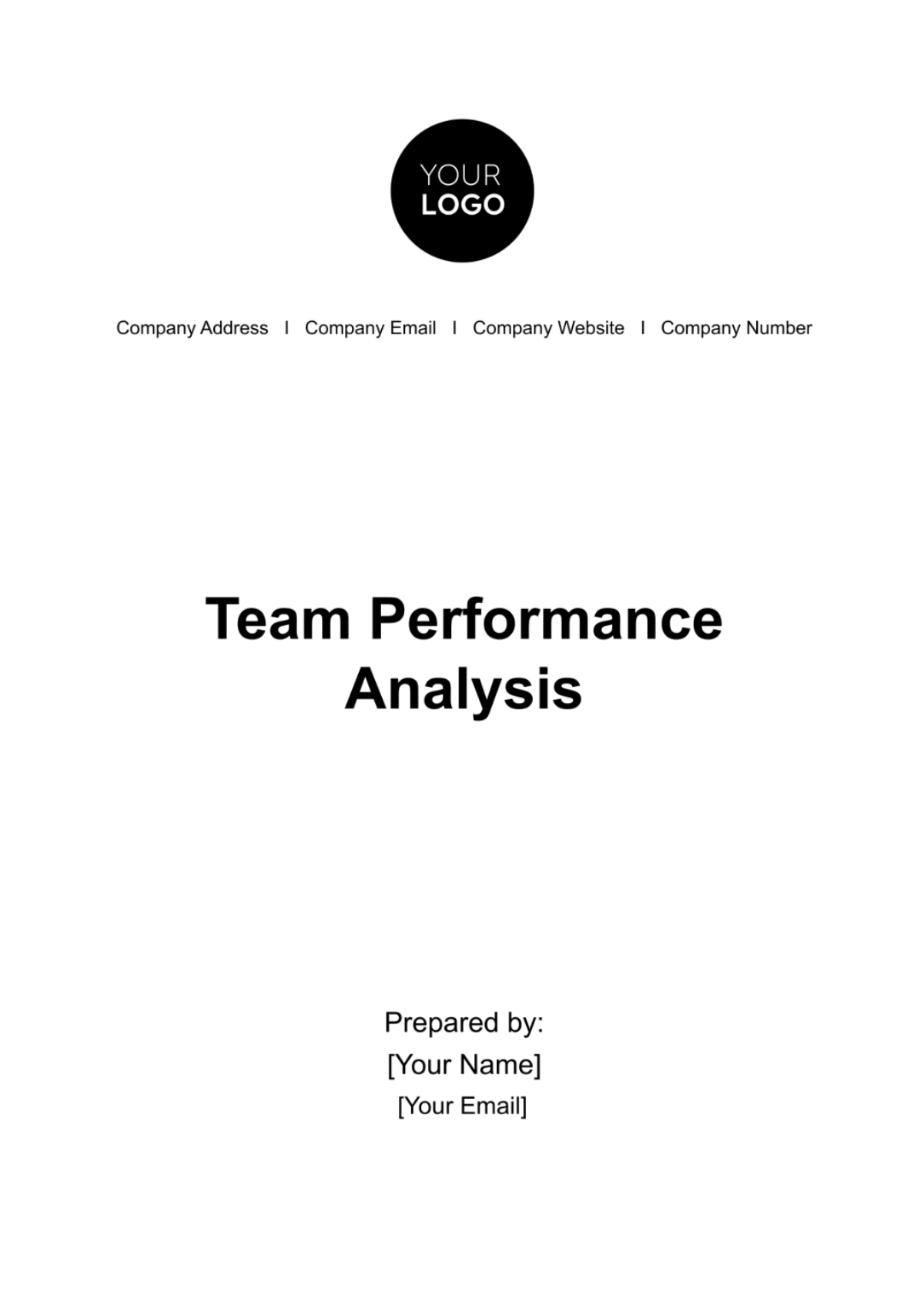
Table of Contents
I. Introduction .................................................................................................................2
II. Data Collection ...........................................................................................................3
III. Performance Assessment ........................................................................................5
IV. Findings and Recommendations .............................................................................7
V. Conclusion and Action Plan ......................................................................................9
Introduction
In this Team Performance Analysis, we embark on a comprehensive examination of the Marketing Department's Creative Team, scrutinizing their performance throughout the last quarter. Our primary objective is to meticulously evaluate the team's effectiveness in attaining their objectives while meticulously identifying their strengths, weaknesses, and potential areas for improvement. To set the stage for our exploration, let's begin with a quick glimpse into the fascinating world of the Creative Team's endeavors.
Over the past several months, the Creative Team has been a vital cog in the marketing machinery, orchestrating the creative elements that underpin our campaigns. Their work has a profound impact on our brand's image, market positioning, and ultimately, our bottom line. It's a domain where the amalgamation of art and strategy is paramount, where the lines between aesthetics and efficacy blur into a canvas of innovation.
Purpose of the Analysis
This analysis is not an exercise in mere scrutiny; it is a deliberate pursuit of knowledge, a quest for actionable insights that can propel the Creative Team to new heights of productivity, collaboration, and, ultimately, excellence. We embark on this journey with the clear intention of fostering an environment in which creativity and efficiency coexist harmoniously.
Scope and Objectives
As we delve deeper into this analysis, our focus will be on the multifaceted realm of the Creative Team's activities. We shall cast our discerning eye over the nuances of project delivery, communication dynamics, and individual contributions, all through the lens of performance metrics and key performance indicators (KPIs). This examination will allow us to gauge their effectiveness in meeting deadlines, crafting innovative output, and ensuring the satisfaction of our esteemed clients.
Our objectives are clear:
|
|
|
Team Background and Composition
Before we delve into the heart of our analysis, it is prudent to acquaint ourselves with the protagonists of this narrative—the members of the Creative Team. Comprising six individuals, each bearing a unique set of skills, this team is a mosaic of talent. From designers who breathe life into concepts to copywriters who weave narratives with words, and video editors who add a visual flair, they collectively orchestrate the symphony of creativity that propels our marketing campaigns.
Our journey into the depths of the Marketing Department's Creative Team's performance promises to be an enlightening one. Through a rigorous examination of data, case studies, research findings, and facts, we will unearth valuable insights that will guide us in our quest to optimize their performance. Our approach is grounded in pragmatism, aimed at tangible outcomes, and driven by a fervent desire to elevate the Creative Team's contributions to our organization's success.
Data Collection
Before delving into the specifics of our data collection and methodology, it is imperative to understand the meticulous processes that underpin our analysis. In this section, we will outline our approach to gathering and analyzing data, ensuring transparency and rigor every step of the way.
Data Sources
Our analysis draws from a carefully curated set of data sources, each contributing a unique facet to our understanding of the Creative Team's performance. Let's explore these sources in detail:
Surveys: To capture the subjective experiences and perceptions of team members, we administered surveys. These surveys probed into various dimensions, such as team dynamics, workload distribution, and the challenges faced by team members. By collating the perspectives of those on the frontline, we gained valuable insights into the human aspect of team dynamics. |
Performance Metrics: Objectivity is essential in our analysis. Thus, we diligently reviewed performance metrics, including project delivery data, client feedback, and individual performance evaluations. These quantifiable measures provide a concrete view of the team's output and its impact on our stakeholders, serving as a foundation for our analysis. |
Observations: Our quest for insights extended beyond numbers. We participated in team meetings and observed work interactions. These qualitative observations allowed us to unearth subtle nuances in team dynamics, providing context to the quantitative data we collected. |
Interviews: Complementing our structured data sources, we conducted informal interviews with individual team members. These open conversations allowed team members to articulate their thoughts, concerns, and aspirations more freely. The richness of these insights goes beyond what can be captured in surveys or metrics. |
Data Collection Timeline
To ensure the integrity and completeness of our data, we adhered to a carefully planned timeline. The duration of our data collection spanned four weeks, a deliberate choice aimed at capturing the ebb and flow of team dynamics, workload fluctuations, and project phases. By avoiding narrow windows of data collection, we minimized the risk of drawing conclusions from isolated incidents.
Sampling Method (if applicable)
In our pursuit of an unbiased view, we adopted a census approach, involving all six team members in our data collection efforts. This approach eliminates any potential bias that might arise from selective sampling, ensuring that every voice within the team contributes equally to our analysis.
Ethical Considerations
Ethics and confidentiality are paramount in our analysis. To uphold these principles, we took several ethical measures:
Anonymity: Respondents were assured of complete anonymity when participating in surveys, safeguarding their privacy and encouraging candid responses. |
Informed Consent: We provided clear explanations of our data collection purpose and scope to all participants, ensuring they were fully informed before participating. |
Ethical Guidelines: Our entire data collection process adhered to ethical guidelines and best practices to maintain data integrity. |
In sum, our commitment to transparency, objectivity, and ethical rigor underscores every aspect of our data collection and methodology. This robust foundation will serve as the cornerstone of our subsequent analysis, enabling us to provide actionable insights and recommendations for enhancing the Creative Team's performance.
Performance Assessment
To gain a comprehensive understanding of the Creative Team's performance, we delve into the heart of our analysis—performance assessment. This section is instrumental in evaluating how the team measures up against key performance indicators, benchmarks, and a SWOT analysis, all while identifying crucial performance gaps and their underlying causes.
Key Performance Indicators (KPIs)
Our analysis begins by scrutinizing the Creative Team's performance through a lens sharpened by key performance indicators (KPIs). These indicators are central to our assessment and are divided into two essential categories:
Individual Contributions |
We meticulously assessed each team member's contributions based on several factors, including the number of projects completed, the creativity injected into their work, and the overall quality of their output. This aspect of our evaluation provides insights into the unique strengths of team members and areas where growth may be needed. |
Team Outcomes |
A team's true efficacy lies in its collective performance. We evaluated the Creative Team's performance as a whole by considering crucial metrics such as project delivery time, client satisfaction levels, and their success in meeting campaign goals. This holistic perspective allows us to gauge their overall impact on our organizational objectives. |
Benchmarking
To contextualize the Creative Team's performance, we undertook benchmarking efforts. By comparing their KPIs with industry standards and best practices, we aim to provide a frame of reference that extends beyond our organization's boundaries. This perspective sheds light on areas where the team excels and areas that may warrant improvement in relation to industry norms.
SWOT Analysis
A SWOT analysis provides a multidimensional view of the Creative Team's internal and external factors. Here, we dissect the team's strengths, weaknesses, opportunities, and threats in a methodical manner:
Strengths | Weaknesses | Opportunities | Threats |
We identified several notable strengths within the Creative Team, including robust creative skills among team members, effective project management practices, and a high level of motivation and dedication. | Our analysis unveiled key weaknesses, including communication gaps in team meetings, overburdened team members at risk of burnout, and inconsistent client feedback tracking. | In seeking opportunities for growth and enhancement, we propose initiatives such as upskilling team members with advanced design tools, implementing regular team-building activities, and streamlining project management tools. | Threats to the team's performance include intense competition in the industry, the potential loss of key team members due to burnout, and the ever-evolving landscape of client expectations. |
Gap Analysis
The gap analysis is pivotal in our assessment, serving as a bridge between identifying areas of concern and crafting actionable recommendations. This process unfolds as follows:
Identifying Performance Gaps: Through a meticulous examination of project delivery time, client feedback management, and creative output consistency, we pinpointed performance gaps that demand attention. |
Causes of Gaps: We recognize that these performance gaps are rooted in heavy workloads, a need for more efficient communication channels, and the absence of robust feedback mechanisms. |
Impact on Team Goals: It is paramount to understand the implications of these gaps on the Creative Team's overarching objectives. These performance gaps detrimentally affect their ability to meet project deadlines, maintain consistent creative quality, and ensure client satisfaction—critical components of their mission. |
In summary, our performance assessment is grounded in empirical data, industry benchmarks, and a meticulous SWOT analysis, all converging to identify and understand performance gaps that are affecting the Creative Team's effectiveness. As we move forward in this analysis, our focus will shift to the formulation of actionable recommendations aimed at addressing these gaps and fostering continuous improvement within the team.
Findings and Recommendations
As we enter the crucial phase of presenting our findings and recommendations, it is essential to provide a succinct overview of our discoveries, offer actionable insights for improvement, and chart a clear path forward for the Creative Team. In this section, we will detail our key findings and translate them into a set of actionable recommendations, both short-term and long-term.
Summary of Findings
Strengths and Weaknesses
Our comprehensive analysis has uncovered a balanced mixture of strengths and weaknesses within the Creative Team. While the team excels in creativity and demonstrates effective project management practices, they face challenges in the realms of communication and workload management.
Areas of Improvement
The Creative Team's journey toward enhanced performance entails targeted improvements in three critical areas:
Communication: Bridging communication gaps within the team is paramount. |
Workload Distribution: Balancing individual workloads to prevent burnout is essential. |
Feedback Tracking: Establishing a systematic approach to tracking and acting upon client feedback is necessary. |
Positive Trends
Among the notable trends that have emerged, there is a positive upswing in team motivation and creativity. These are promising signs that, when nurtured, can significantly contribute to the team's overall success.
Recommendations
Short-Term Solutions
In the short term, immediate action is required to address pressing issues and lay the groundwork for long-term improvement:
|
Long-Term Strategies
For lasting improvements, the Creative Team should consider long-term strategies that empower them to evolve and adapt to changing demands:
|
Actionable Steps
In translating these recommendations into actionable steps, accountability and timelines are key to ensuring successful implementation:
Assigning Responsibilities |
|
Setting Milestones |
|
Allocating Resources |
|
Our findings and recommendations aim to guide the Creative Team towards a path of continuous improvement. By addressing their strengths, weaknesses, and opportunities, and by implementing short-term solutions and long-term strategies, the team is poised to enhance their performance, productivity, and overall effectiveness in delivering creative excellence to our organization. These actionable steps will propel the team towards their goals and foster a culture of innovation and collaboration.
Conclusion and Action Plan
Conclusion of the Analysis
Our journey through the analysis of the Creative Team's performance has revealed a team with considerable potential, marked by strengths in creativity and project management. However, this potential is tempered by pressing issues related to communication and workload management. In this concluding section, we will summarize the key takeaways from our analysis, underscore the importance of addressing these issues, and outline a clear implementation plan to drive improvements in team performance and overall success.
Importance of Addressing Identified Issues
The significance of addressing the issues identified within the Creative Team cannot be overstated. These issues strike at the heart of the team's ability to consistently deliver high-quality creative content, meet project deadlines, and, most importantly, maintain client satisfaction. As creative content is a linchpin of our marketing efforts, any shortcomings in these areas have a direct impact on our organization's brand image and market positioning.
Failure to address communication gaps can result in misunderstandings, delayed projects, and a lack of alignment among team members. On the other hand, neglecting workload management concerns may lead to overburdened team members, risking burnout and diminished productivity. Lastly, the absence of a systematic feedback tracking system hinders the team's ability to learn from past projects and adapt to evolving client expectations.
Implementation Plan
Recognizing the urgency of addressing these issues, we have devised a comprehensive implementation plan that outlines specific recommendations, responsible parties, and timelines. The success of these initiatives hinges on diligent execution and consistent monitoring. Here is a summary of the implementation plan:
Short-Term Solutions (To be initiated immediately) |
|
Long-Term Strategies (To be implemented over the coming months) |
|
Overall Impact on Team Performance
The anticipated impact of these changes is profound. By addressing the identified issues and implementing the recommended solutions, we foresee the emergence of a more cohesive and productive Creative Team. This transformation will not only mitigate the current challenges but also pave the way for the team to consistently deliver high-quality creative content, meet project deadlines, and maintain client satisfaction.
In the grand scheme of our organizational goals, a revitalized Creative Team will play a pivotal role in elevating our brand image, enhancing market positioning, and ultimately contributing to our bottom line. Regular monitoring and evaluation of these initiatives will be integral to ensuring their success, and we are committed to nurturing a culture of continuous improvement within the team.
In conclusion, as we embark on the path to implementing these changes, we remain steadfast in our commitment to excellence, creativity, and the pursuit of delivering exceptional results for our organization. The future is bright for the Creative Team, and these changes will propel us toward a new era of success and innovation.
- 100% Customizable, free editor
- Access 1 Million+ Templates, photo’s & graphics
- Download or share as a template
- Click and replace photos, graphics, text, backgrounds
- Resize, crop, AI write & more
- Access advanced editor
Boost team productivity with our Team Performance Analysis HR Template. Evaluate strengths, identify areas for improvement, and set actionable goals. Customize metrics, track progress, and enhance collaboration. Streamline performance assessments, drive continuous growth, and achieve peak team efficiency. Empower your team to excel with data-driven insights and targeted improvements. Grab yours now!

